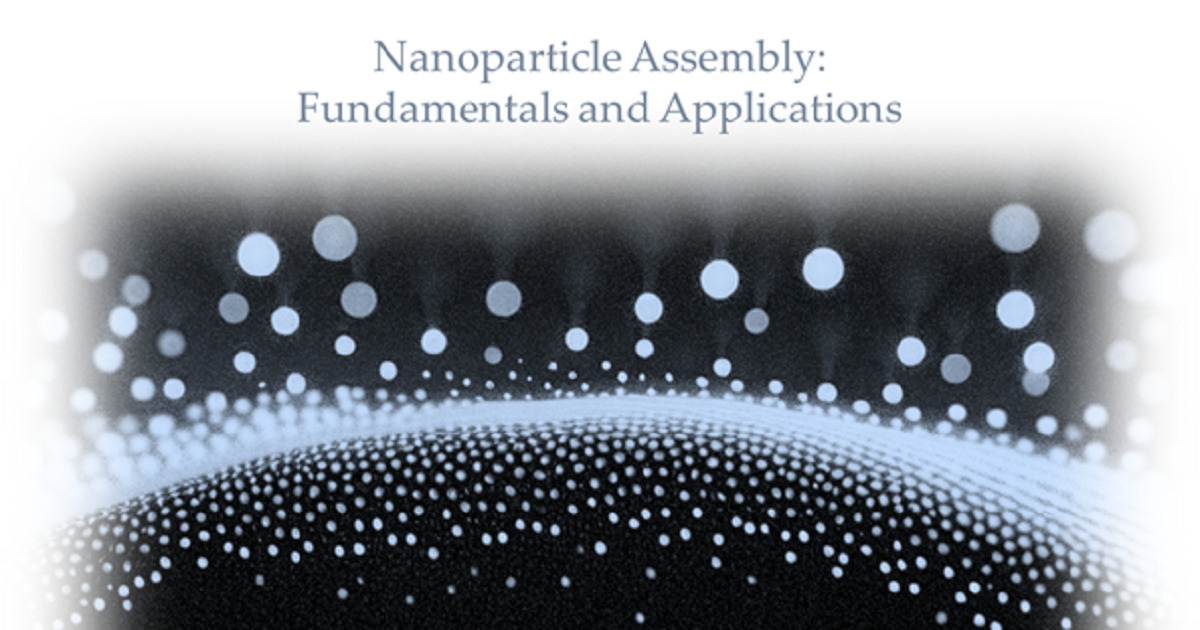- 3.2Impact Factor
- 6.4CiteScore
- 16 daysTime to First Decision
Nanoparticle Assembly: Fundamentals and Applications
This special issue belongs to the section “Advanced Nanomaterials and Nanotechnology“.
Special Issue Information
Dear Colleagues,
Nanoparticle assembly is a cutting-edge field within nanotechnology and materials science, focusing on the organization of nanoparticles into larger, structured formations. These assemblies exhibit novel properties and functionalities that are not present in individual nanoparticles, driven by interparticle forces (such as van der Waals interactions, electrostatic forces, and steric effects), chemical bonding, and surface decoration. Characterizing these assemblies through advanced techniques like transmission electron microscopy (TEM), scanning electron microscopy (SEM), and various spectroscopic techniques is crucial for understanding their structure and properties. The significance of research in nanoparticle assembly lies in its wide-ranging applications, from drug delivery and imaging in biomedicine to fabricating electronic devices enhancing the efficiency of photovoltaics and developing advanced materials with superior mechanical, thermal, and electrical properties.
We are pleased to invite you to contribute to this Special Issue with your full papers, reviews, or communications on experimental and theoretical results of nanoparticle assembly.
The aim of this Special Issue is to explore novel assembly techniques, elucidate the mechanisms underlying nanoparticle interactions, demonstrate computational and experimental characterization techniques, and highlight cutting-edge applications and the potential of assembled nanostructures.
I look forward to receiving your contributions.
Dr. Alina Skorynina
Dr. Bo Xiao
Guest Editors
Manuscript Submission Information
Manuscripts should be submitted online at www.mdpi.com by registering and logging in to this website. Once you are registered, click here to go to the submission form. Manuscripts can be submitted until the deadline. All submissions that pass pre-check are peer-reviewed. Accepted papers will be published continuously in the journal (as soon as accepted) and will be listed together on the special issue website. Research articles, review articles as well as short communications are invited. For planned papers, a title and short abstract (about 250 words) can be sent to the Editorial Office for assessment.
Submitted manuscripts should not have been published previously, nor be under consideration for publication elsewhere (except conference proceedings papers). All manuscripts are thoroughly refereed through a single-blind peer-review process. A guide for authors and other relevant information for submission of manuscripts is available on the Instructions for Authors page. Materials is an international peer-reviewed open access semimonthly journal published by MDPI.
Please visit the Instructions for Authors page before submitting a manuscript. The Article Processing Charge (APC) for publication in this open access journal is 2600 CHF (Swiss Francs). Submitted papers should be well formatted and use good English. Authors may use MDPI's English editing service prior to publication or during author revisions.
Keywords
- nanoparticles
- self-assembly
- colloidal stability
- material properties and characterization
- biomedical application
- nanomanufacturing and nanocomposites
- nanoparticle assembles in electronics and optoelectronics
- energy application and catalysis
- environmental applications

Benefits of Publishing in a Special Issue
- Ease of navigation: Grouping papers by topic helps scholars navigate broad scope journals more efficiently.
- Greater discoverability: Special Issues support the reach and impact of scientific research. Articles in Special Issues are more discoverable and cited more frequently.
- Expansion of research network: Special Issues facilitate connections among authors, fostering scientific collaborations.
- External promotion: Articles in Special Issues are often promoted through the journal's social media, increasing their visibility.
- e-Book format: Special Issues with more than 10 articles can be published as dedicated e-books, ensuring wide and rapid dissemination.

